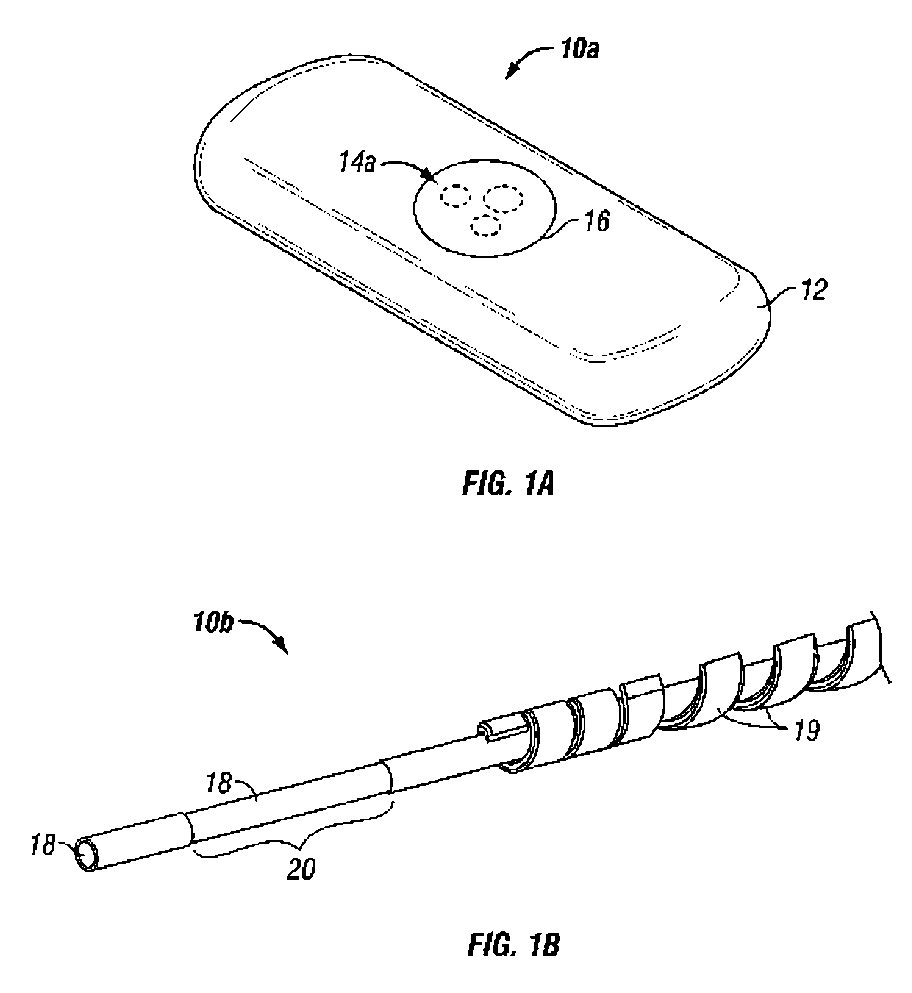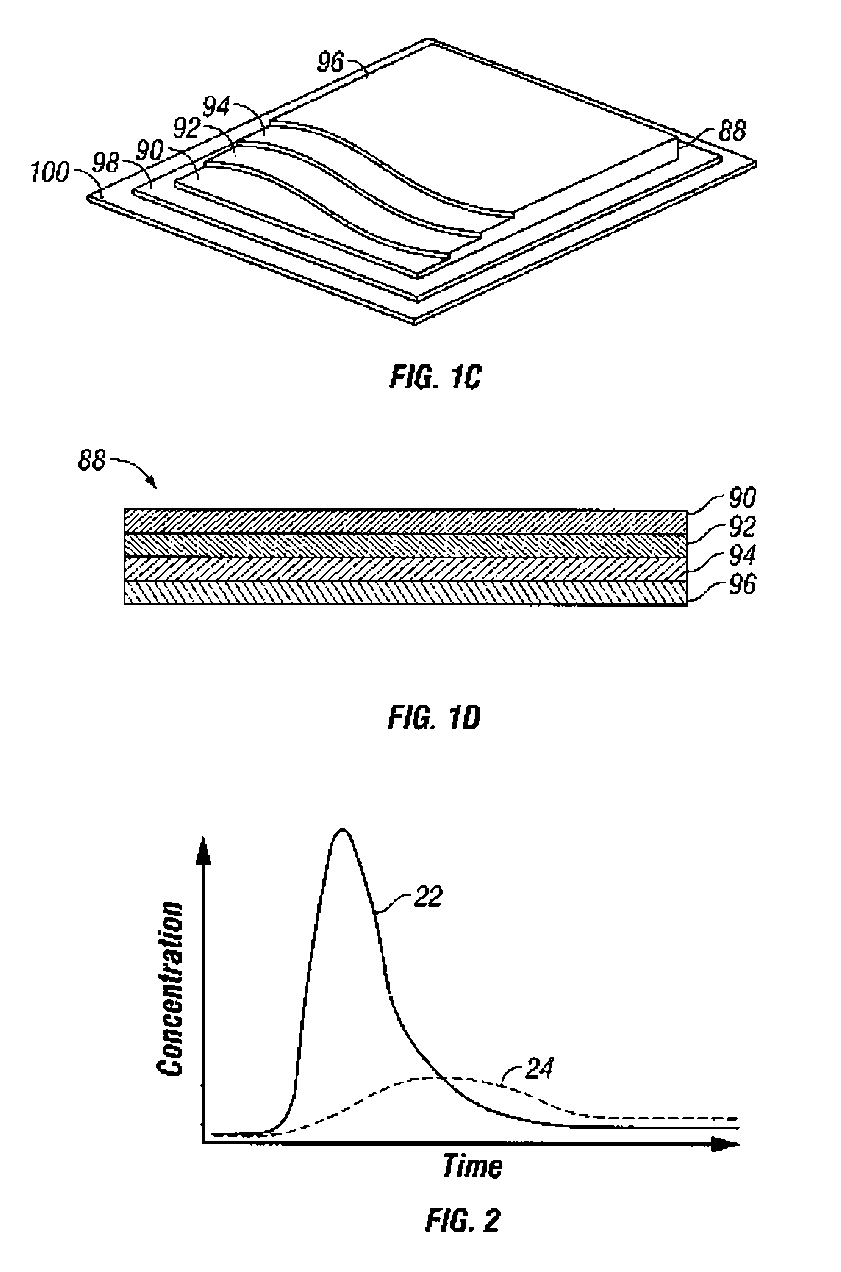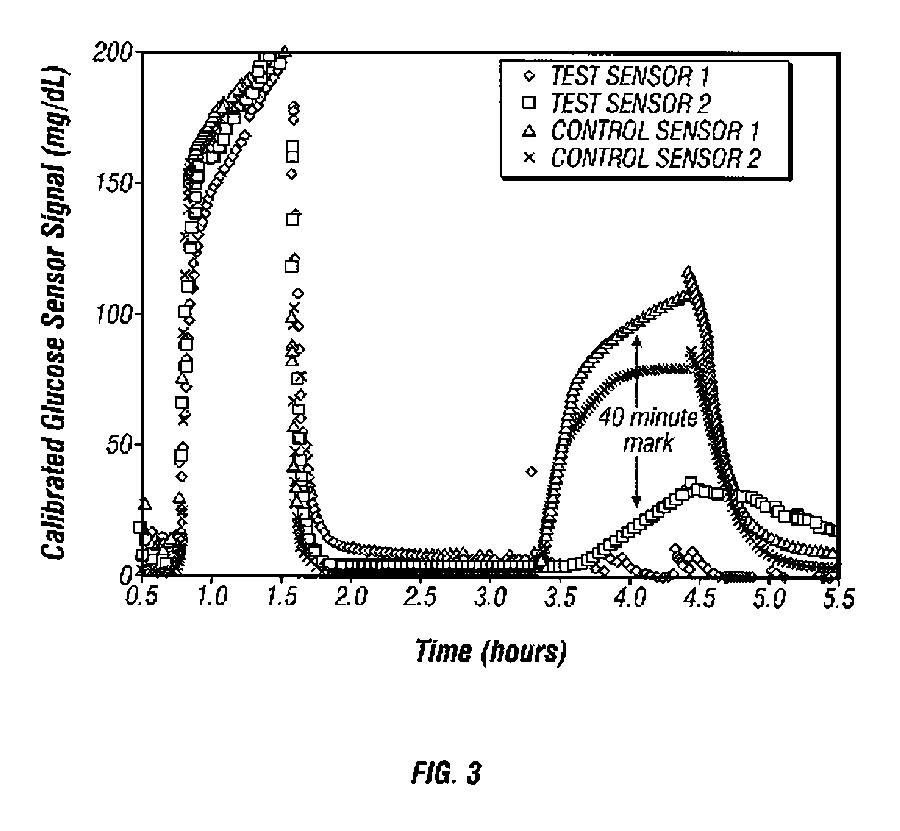Afinity domain for analyte sensor
a sensor and analyte technology, applied in the field of systems and methods involving the detection or measurement of analytes, can solve the problems of increasing signal strength, acetaminophen interfering species, and other electroactive species, and achieve the effect of reducing the effects of all interfering species
- Summary
- Abstract
- Description
- Claims
- Application Information
AI Technical Summary
Benefits of technology
Problems solved by technology
Method used
Image
Examples
first embodiment
[0007] Accordingly, in a first embodiment, a membrane suitable for use with an analyte sensor is provided, the membrane comprising an affinity domain, wherein the affinity domain comprises a sorbent having an affinity for an interfering species.
[0008] In an aspect of the first embodiment, the sorbent has an affinity for a phenol-containing species.
[0009] In an aspect of the first embodiment, the sorbent has an affinity for acetaminophen.
[0010] In an aspect of the first embodiment, the sorbent comprises an adsorbent substance.
[0011] In an aspect of the first embodiment, the adsorbent substance comprises a chromatography-packing material.
[0012] In an aspect of the first embodiment, the sorbent comprises a molecularly imprinted surface adapted to bind with the interfering species by covalent adherence.
[0013] In an aspect of the first embodiment, the sorbent comprises a molecular structure that has a geometric structure and hydrogen binding capability, wherein the molecular structure is...
fifth embodiment
[0017] In a fifth embodiment, an analyte sensor for measuring the concentration of an analyte in a host is provided, the sensor comprising a sensing region for sensing the analyte; and a membrane system comprising an affinity domain, the affinity domain having an affinity for an interfering species, wherein the membrane system is disposed adjacent to the sensing region.
[0018] In an aspect of the fifth embodiment, the sensing region comprises an electroactive surface and wherein the membrane system comprises an enzyme capable of reacting with the analyte.
[0019] In an aspect of the fifth embodiment, the affinity domain comprises a sorbent, wherein the sorbent is configured to slow the diffusion of the interfering species through the membrane system to the sensing region.
[0020] In an aspect of the fifth embodiment, the sorbent has an affinity for a phenol-containing species.
[0021] In an aspect of the fifth embodiment, the sorbent has an affinity for acetaminophen.
[0022] In an aspect of...
PUM
| Property | Measurement | Unit |
|---|---|---|
| diameter | aaaaa | aaaaa |
| thickness | aaaaa | aaaaa |
| concentration | aaaaa | aaaaa |
Abstract
Description
Claims
Application Information
 Login to View More
Login to View More - R&D
- Intellectual Property
- Life Sciences
- Materials
- Tech Scout
- Unparalleled Data Quality
- Higher Quality Content
- 60% Fewer Hallucinations
Browse by: Latest US Patents, China's latest patents, Technical Efficacy Thesaurus, Application Domain, Technology Topic, Popular Technical Reports.
© 2025 PatSnap. All rights reserved.Legal|Privacy policy|Modern Slavery Act Transparency Statement|Sitemap|About US| Contact US: help@patsnap.com



